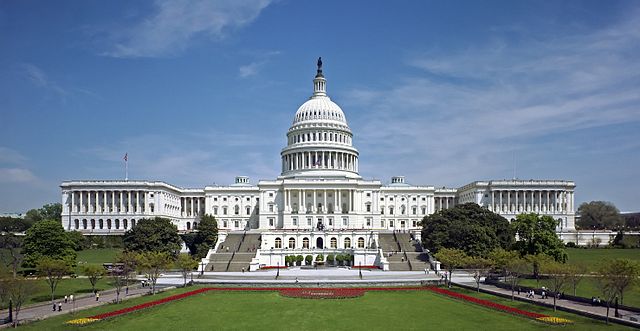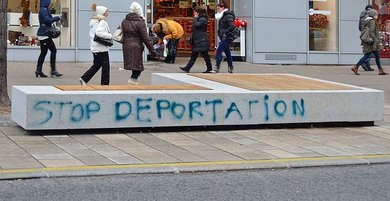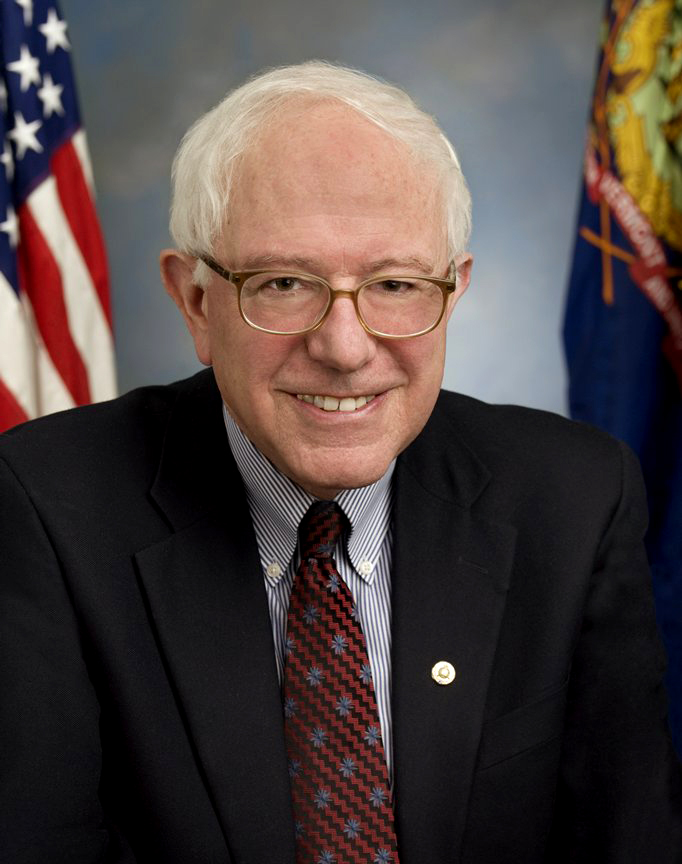This blog post summarizes the author’s October 2015 book Open Borders and International Migration Policy. The book is available both electronically and in print from Amazon, Google Books, and the publisher, Palgrave MacMillan.
Although political philosophers debate the morality of open borders, few social scientists have explored what would happen if immigration were no longer limited. This book looks at three historical examples of temporarily unrestricted migration into the United States, France, and Ireland: the arrival of Mariel Cubans in Miami (Florida) in 1980, the flight of Pied Noir and Harki refugees from Algeria to Marseille in 1962, and the migration of Poles and other new European Union ‘Accession 8’ citizens into Dublin in 2004. Based on personal interviews, archival research, and statistical analysis, the study finds that the effects of these population movements on the economics, politics, and social life of these cities were much less catastrophic than opponents of free immigration claim. Detailed chapters cover schools, crime, ethnic politics, unemployment and wages, public finances, housing, and racial violence.
Open Borders: The Case editorial note: See our background page on the Mariel boatlift.
Political philosophers Joseph Carens, Catherine Wihtol de Wenden, and Will Kymlicka have argued for the morality of an open-borders immigration policy, yet such other social theorists as Michael Walzer, Stephen Macedo, and John Isbister dismiss this approach because of the supposed harm that unrestricted immigration would cause to natives. After exploring the normative arguments for and against open borders, the first chapter concludes that the crux of many theoretical objections to unrestricted immigration is empirical. Unfortunately, however, many of the factual assumptions that immigration restrictionists make have not been fully or rigorously tested. This new book therefore aims to see if unregulated immigration actually hurt natives.
The following chapter replicates David Card’s 1990 now-classic, natural-experiment-based article demonstrating that the Mariel migrants had no significant immediate effect on native wages or unemployment rates in Miami. Chapter 2 extends Card’s findings to two European cities that experienced sudden waves of migration comparable to the Mariel Boatlift in south Florida: Marseille, France, which faced the influx of Pieds-Noirs and Harkis “repatriates” from Algeria in 1962; and Dublin, Ireland, which received thousands of new European-Union, “Accession 8” citizens from Eastern Europe beginning in 2004. Based on elite interviews, archival materials, and ARIMA regression models, this study of two additional natural experiments concludes that rapid, “uncontrolled” migration had no statistically significant effect on the native employment market in Marseille or Dublin. The analysis likewise finds that sudden immigration appears to have boosted overall wage rates both in Marseille’s total employment market and in Ireland’s construction sector. Theoretically, this investigation thus confirms Card’s optimistic conclusions about the economic effects of immigration. It also shows that his findings are robust across different Western, industrialized countries.
Open Borders: The Case editorial note: See our background pages on suppression of wages of natives and the US-specific version.
Chapter 3 focusses on public finances. Although popular rhetoric about “immigrants taking our jobs” or “reducing our wages” typically finds little or no support from rigorous empirical studies, such mainstream investigators as the National Research Council conclude that new immigrants sometimes represent a net fiscal burden, especially at the local level in the short run. To estimate the largest-possible immediate effect of various types of migrants on the finances of large cities in particular, this chapter analyzes over-time budgetary data from Miami, Marseille, and Dublin. Based on quantitative panel models, elite interviews, and archival documents, the study concludes that the overall fiscal impact on localities of rapid, “uncontrolled” migration was effectively nil in Miami and Marseille, but positive in Dublin. Theoretically and empirically, this investigation helps estimate the upper bounds of the possible tax- and social-services-related effects of rapid, unrestricted immigration into an urban area and partly confirms the relevant literature on the differing fiscal influences of refugees versus economic migrants and high- versus low-skilled labor.
The fourth chapter looks at the housing market. Unless public authorities and the private real estate market immediately increase the number of available dwellings, a sudden wave of immigration may increase residential overcrowding. According to standard economic theory, greater demand for housing should likewise boost prices in the rental market, where most immigrants would initially seek shelter. In contrast, interpretations based on a dual housing market predict that immigration-caused demand will not be as likely to boost natives’ housing costs where newcomers are highly segregated. To test these two explanations, this chapter uses interviews with local economists and real estate agents, historical documents, and panel regression models for the three historical natural experiments. Quantitative data include official census statistics on the number of people per room and public or private estimates of changes in rents. Regression models suggest that increased overcrowding occurred in Miami but not in Marseille or Dublin. In contrast, the analysis shows a significant migration-caused rent increase in the normal housing market of only Marseille, the least-segregated city. Theoretically, this work thus tends to confirm the theory of dual housing markets for immigrants versus natives but only partially supports the standard economic model of housing.
Open Borders: The Case editorial note: See Nathan Smith’s post The great land value windfall from open borders.
Chapter 5 concerns itself with schools. Popular rhetoric claims that because of immigration, native schoolchildren have “no room to learn” and educational standards are being “dumbed down.” Yet relatively few empirical social scientists have examined whether immigration actually causes school overcrowding. A larger group of statistically oriented scholars has examined migration and academic achievement, but they tend to focus more on how well migrant students do in school than on whether immigration hurts native children in the same district. The smaller pool of investigators who have looked at this latter question usually aim to test the “peer effects” theory of immigration effects but often are confronted with the serious methodological problem of endogeneity via immigrant and native self-selection into particular districts. To estimate the largest-possible immediate effects of various types of migrants on the degree of overcrowding and academic achievement in secondary schools in large cities in particular, this chapter therefore analyzes official over-time classroom-density and test-score data from these three natural experiments where immigration is clearly exogenous to the choice of school district. Based on interviews with teachers and school officials, examination of archival materials from relevant institutions, and quantitative panel analysis of educational and census data, my study concludes that the rapid, unrestricteded migration of immigrant secondary-school students neither substantially increased classroom density nor affected the overall test scores in these districts. Theoretically and empirically, this investigation helps estimate the upper bounds of the possible education-related effects of rapid, unrestricted immigration into an urban area and disconfirms an immigration-based “peer effects” model of academic achievement. Massive immigration does not necessarily cause a decline in student learning, and it does not even seem to boost classroom overcrowding very much if at all.
Crime is the main topic in Chapter 6. Although xenophobic popular rhetoric about “foreign-born criminals” abounds, relatively few empirical social scientists have examined what, if any link, actually exists between immigration and crime. Those quantitatively oriented investigators who do look at this question, moreover, typically focus on a single country or region and tend to find little or no overall effect from migration. This chapter thus uses cross-national statistics to test the “strain” and “importation” models of migration and criminal deviance. To estimate the largest-possible immediate effects of various types of migrants on the level of violent or “serious” crime (i.e., homicide and burglary) in large cities in particular, I analyze official over-time crime data from the three cities. Elite interviews, archival materials, and quantitative panel models of police and census data indicate that the rapid, “uncontrolled” migration of working- or middle-class refugees or workers did increase burglary rates in all three cities. However, the sudden arrival of primarily low-skilled individuals—some of whom had already served prison time in Cuba—appears to have boosted the homicide rate in Miami only. This investigation therefore helps estimate the upper bounds of the possible crime-related effects of rapid, unrestricted immigration into an urban area and partly confirms the importation model of homicide and strain theory of burglary. Though massive immigration does not necessarily cause a large rise in all forms of urban crime in the host country, the entry of many poor migrants with few economic opportunities and/or with criminal backgrounds may.
Open Borders: The Case editorial note: See our crime page, our backgrounder page on Hispanic crime and illegal immigration in the United States, and Vipul Naik’s speculative post about crime in the US under open borders.
The last body chapter examines ethnic politics and racial violence. Although some scholars of “realistic group conflict” argue that immigration-related ethnic conflict usually increases with a sudden influx of foreign-born residents, Daniel J. Hopkins’ theory of “politicized places” suggests that the effect of immigrant flows may partly depend on “salient national rhetoric.” To help adjudicate between these two theoretical explanations cross-nationally, this chapter analyzes over-time, aggregate voting data and qualitative accounts of inter-ethnic violence from the three urban natural experiments. Relying on elite informants, archival materials, newspaper accounts, and Gary King’s method of ecologically inferring the degree of ethnic voting, the study generally confirms the “politicized places” interpretation. While rapid, “uncontrolled” migration fueled ethnic voting and violence in Miami, where the media and many elites blamed economic woes on the immigrants, migrant inflows had few such effects in Marseille and Dublin, where media treatment was relatively positive and most leaders welcomed the newcomers relatively early on. Theoretically, this investigation thus expands Hopkins’ theory to immigrant-rich urban settings in three different industrialized countries. The chapter might also guide local and national political leaders wishing to avoid a popular backlash against an unexpected wave of recent immigrants.
Open Borders: The Case editorial note: See our background page on nativist backlash.
Chapter 8 summarizes the book’s findings and discusses their implications. Overall, this study concludes that the empirical case against open borders is overstated. The analysis does find overcrowding of housing and a higher burglary rate for all three cities. In Miami only, migration also appears to have led to more homicides, racial violence, and ethnic voting. Residential overcrowding eventually dissipated over time, however, as municipalities built more apartments for the newcomers. Burglaries did increase, but many of the victims were probably the immigrants themselves. Ethnic scapegoating by political and media elites lies at the root of ethnic voting and racial violence, and the many additional murders in Miami arguably represent an atypical case of a sending country deliberately inducing the emigration of violent criminals. With the exception of crime, then, any significant effects from large-scale immigration seem manageable.
On the other side of the coin, what if anything good came of these three migrant streams? First, moving to the U.S., France, or Ireland was undoubtedly good for almost all of the immigrants themselves. Most Mariel Cubans were able to rejoin their families in Miami and eventually move up into the American middle class. Pieds Noirs in Marseille escaped near-certain death at the hands of the Algerian FLN and eventually were able to re-establish their cultural institutions and economically integrate into southern France. And Poles in Dublin found reasonably well-paying jobs, a compatible cultural environment, and a chance to perfect their English. Second, however, these newcomers also contributed greatly to their host societies. Mariel migrant Mirta Ojito grew up to become a journalism professor at Columbia University and win the Pulitzer Prize. The Jewish Pied Noir singer Enrico Macias (born Gaston Ghrenassia in what is today Constantine, Algeria) continues to charm French and global audiences with his Andalusian melodies. At least at the height of the attendant labor shortage, meanwhile, Irish employers eagerly hired Eastern-Europeans to help fuel the Republic’s “Celtic Tiger” economic expansion.
Of course, these three case studies do not constitute the most extreme scenarios of unrestricted immigration, where tens of millions of people might cross international borders suddenly. Within the North Atlantic communities, however, these three examples represent some of the most dramatic and highly concentrated migration flows in modern memory (the not-yet-concluded Syrian refugee crisis aside). A complete lack of enforcement on the southern borders of the E.U. or U.S. would of course encourage larger numbers of poorer migrants to attempt the journey and might cause more significant socio-economic effects on the receiving countries. Yet until such immigration actually occurs, we are reduced to speculating about the consequences. And the analysis of historic cases in this book would be a good place to start developing models of the short-term, localized results of such overwhelmingly large flows should they present themselves. For now, however, any estimation of the socio-economic effects of truly massive, hemisphere-wide open borders requires forecasting beyond historically available data.
Open Borders: The Case editorial note: See also John Lee’s blog post How did we come to be so certain that closed borders are our salvation?
Perhaps the most morally defensible but cautious immigration policy politically imaginable would be the late economist Julian Simon’s recommendation to “increase the volume of total immigration in substantial steps [i.e., up to double the number of entrants per step] unless [or until?] there appear negative effects that are unknown at present.” As my book shows, actual harm from immigration is much harder to find than allegations of deleterious effects. If North Americans are to adopt immigration laws in keeping with their high professed ideals, they might profitably consider following the lead of the Europeans and South Americans–who have already adopted limited open-borders systems–instead of using racialized rhetoric to scapegoat men and women who desire nothing more than an opportunity to earn decent wages and live in peace.
Open Borders: The Case editorial note: See also Vipul Naik’s post Slippery slopes to open borders and John Lee’s post Constitutionally entrenching migration as a fundamental human right: Argentina and open borders.
Related reading
If you found this post interesting, you might want to buy the book on which this summary is based. It’s available both electronically and in print from Amazon, Google Books, and the publisher, Palgrave MacMillan.
The following Open Borders: The Case blog posts and pages might also be of interest.
- What will the rapid economic growth under open borders look like? by Vipul Naik.
- How Would a Billion Immigrants Change the American Polity? by Nathan Smith.
- Our site pages on diaspora dynamics, precautionary principle, and swamped.
The image featured in the header of this post is a photograph of Chinese immigrants en route to gold mines in Australia, circa 1900.





